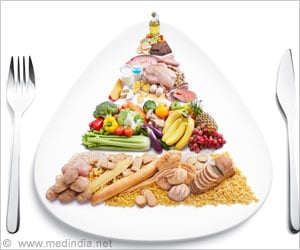refrigerated food is eaten a lot less people than expected, and they're most likely to be thrown out because of misunderstood labels.

Survey participants expected to eat 97 percent of the meat in their refrigerators but finished only about half. They thought they’d eat 94 percent of their vegetables but consumed just 44 percent. They projected they’d eat about 71 percent of the fruit and 84 percent of the dairy, but finished off only 40 percent and 42 percent, respectively.
Top drivers of discarding food included concerns about food safety - odor, appearance, and dates on the labels.
"No one knows what ’use by’ and ’best by’ labels mean, and people think they are a safety indicator when they are generally a quality indicator," Roe said, adding that there’s a proposal currently before Congress to prescribe date labeling rules in an effort to provide some clarity.
Under the proposal, "Best if used by" would, as Roe puts it, translate to "Follow your nose," and "Use by" would translate to "Toss it."
Household food waste happens at the end of the line of a series of behaviors, said Megan Davenport, who led the study as a graduate student in Ohio State’s Department of Agricultural, Environmental and Development Economics.
Advertisement
The web-based pilot study used data from the State of the American Refrigerator survey and included information about refrigerator contents and practices from 307 initial survey participants and 169 follow-up surveys.
Advertisement
An estimated 43 percent of food waste is due to in-home practices - as opposed to waste that happens in restaurants, grocery stores, and on the farm - making individuals the biggest contributors. They’re also the most complicated group in which to drive change, given that practices vary significantly from home to home, Roe said.
"We wanted to understand how people are using the refrigerator and if it is a destination where half-eaten food goes to die," he said.
"That’s especially important because much of the advice that consumers hear regarding food waste is to refrigerate (and eat) leftovers, and to ’shop’ the refrigerator first before ordering out or heading to the store."
Roughly one-third of the food produced worldwide for human consumption -- approximately 1.3 billion tons annually -- is lost or wasted, according to the Food and Agriculture Organization of the United Nations. The organization estimates the annual dollar value of that waste at $680 billion in industrialized countries and $310 billion in developing countries.
This study looked at refrigerated food because that’s where most perishable foods are found in a household and where the bulk of efforts to encourage people to waste less food have been focused on. In addition to better understanding food waste patterns, the researchers wanted to help identify opportunities to design policy or public messaging that will work in driving down waste.
"Our results suggest that strategies to reduce food waste in the U.S. should include limiting and standardizing the number of phrases used on date labels, and education campaigns to help consumers better understand the physical signs of food safety and quality," Davenport said.
Source-Eurekalert















